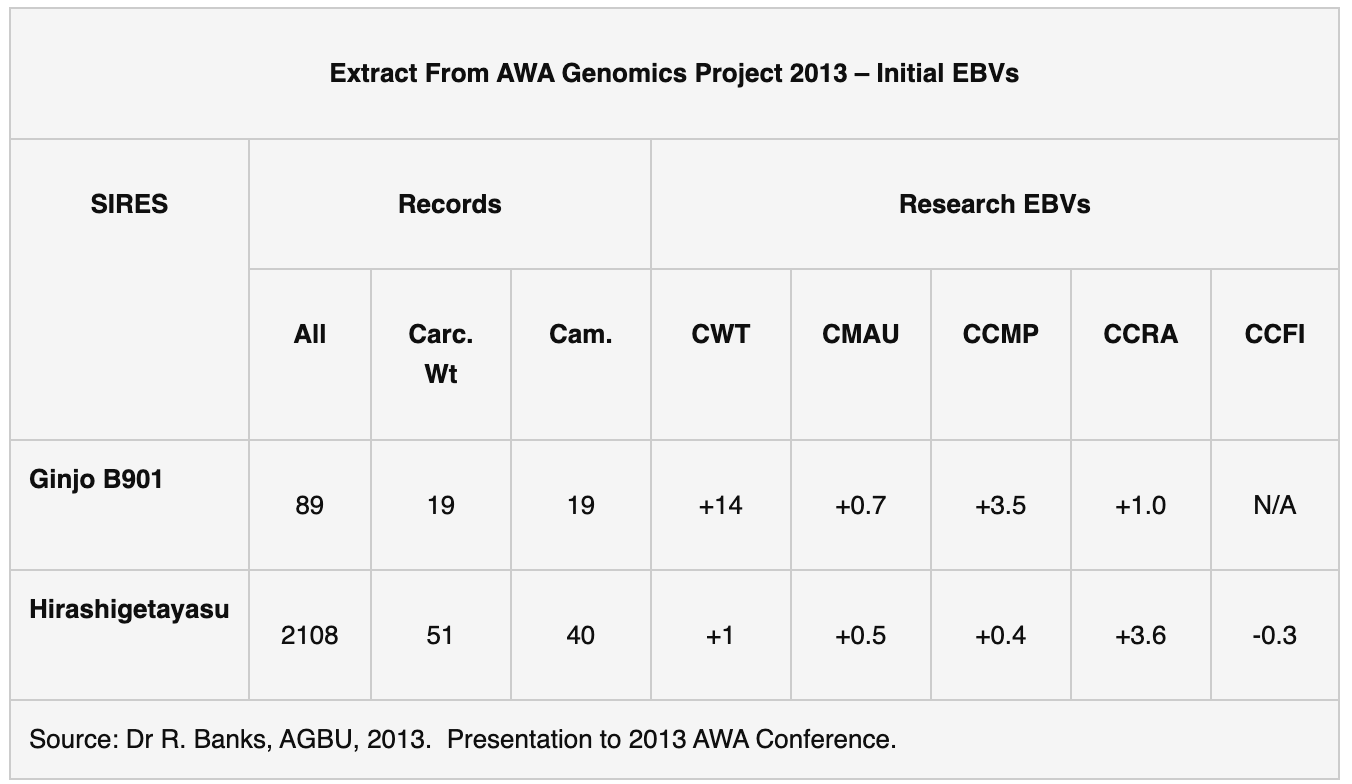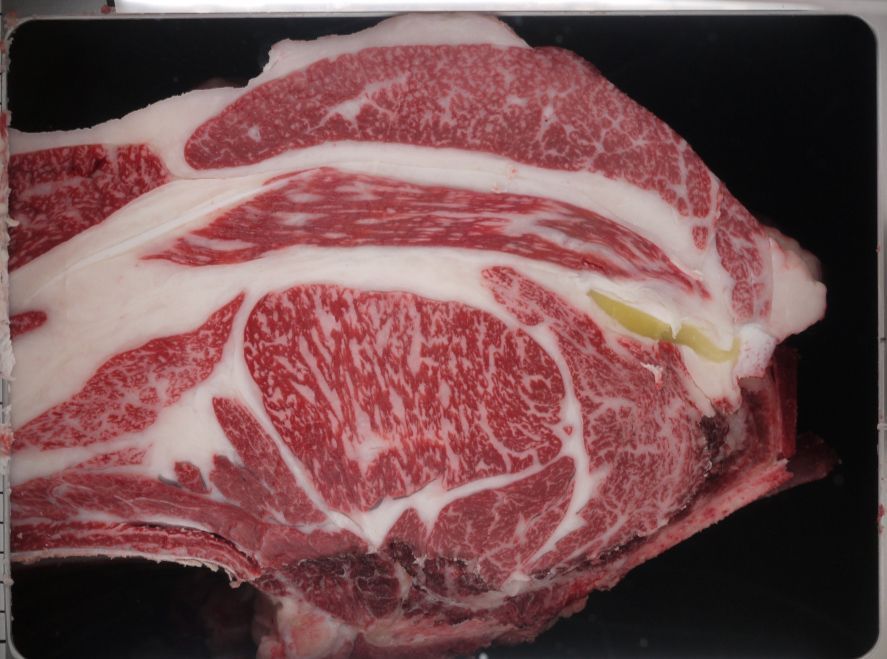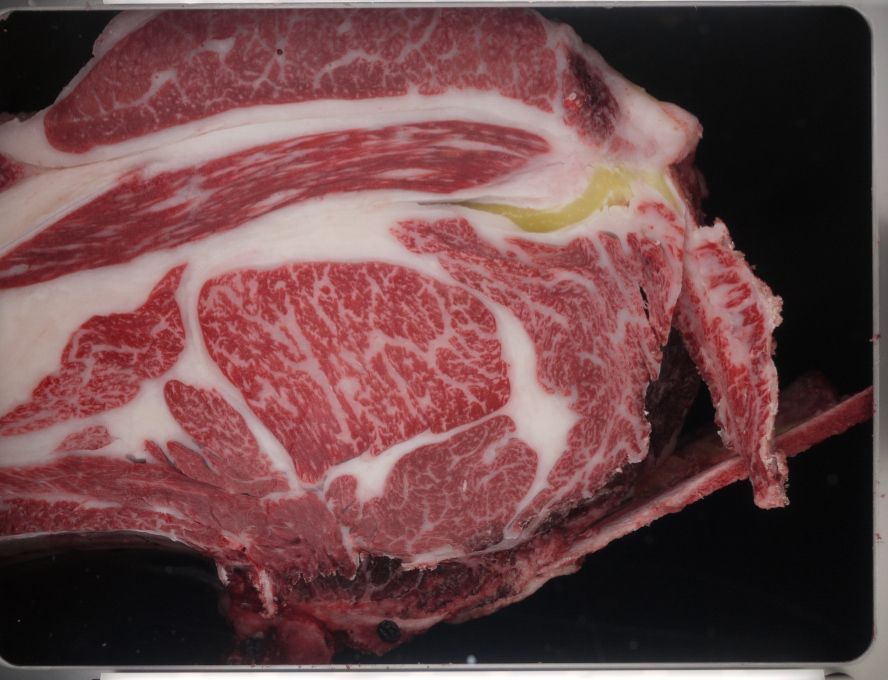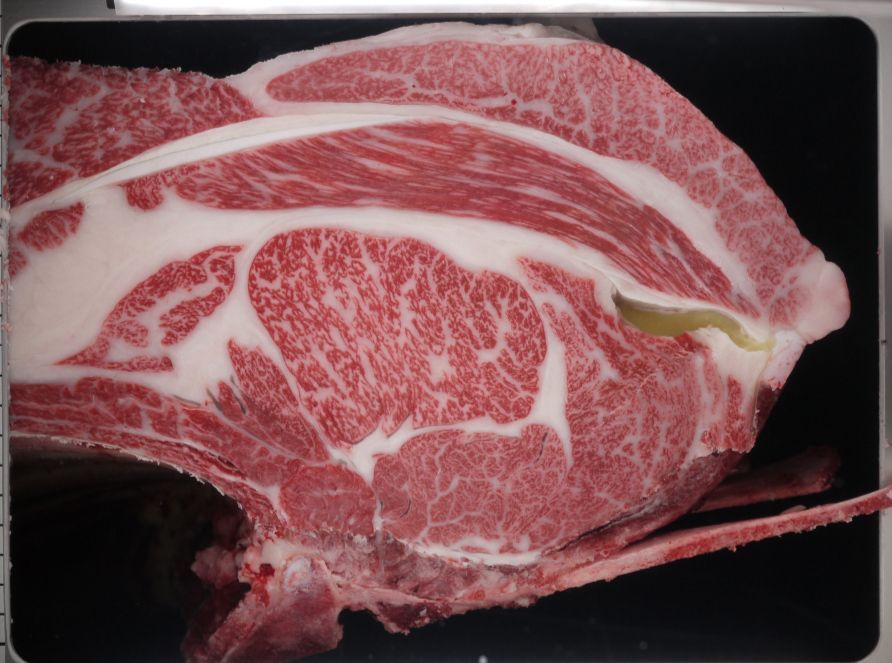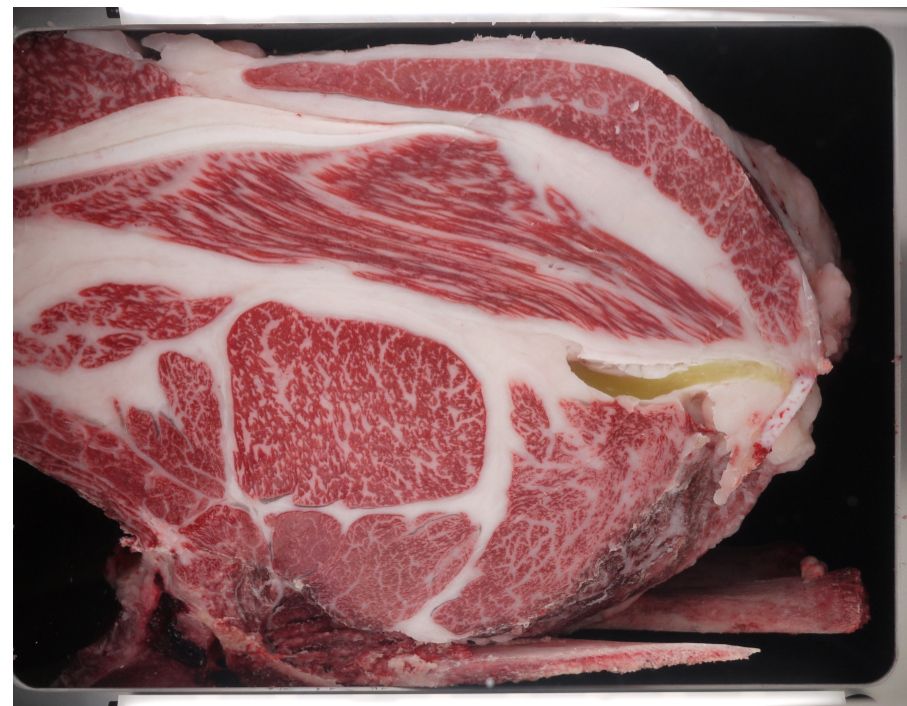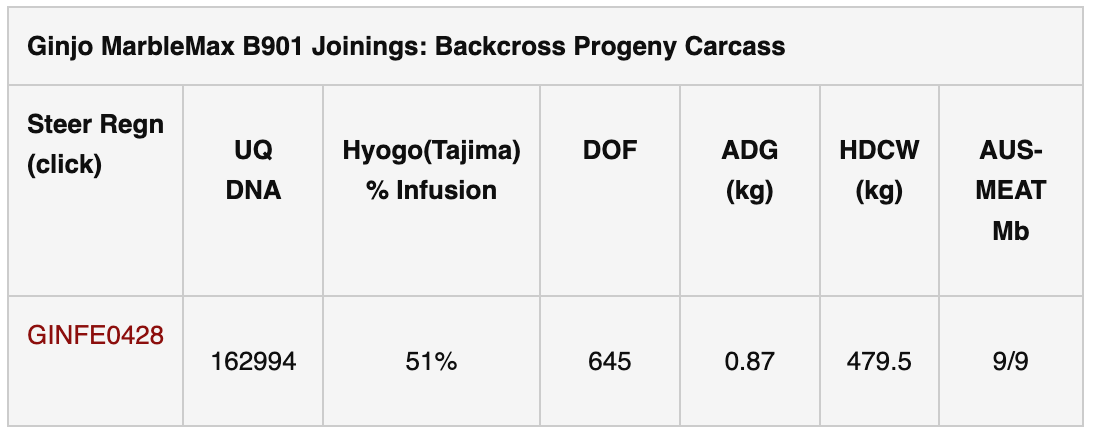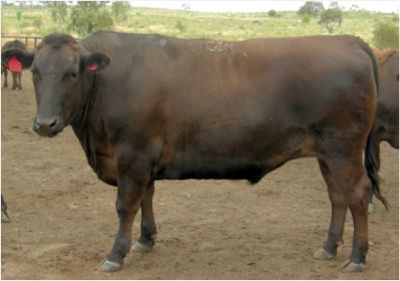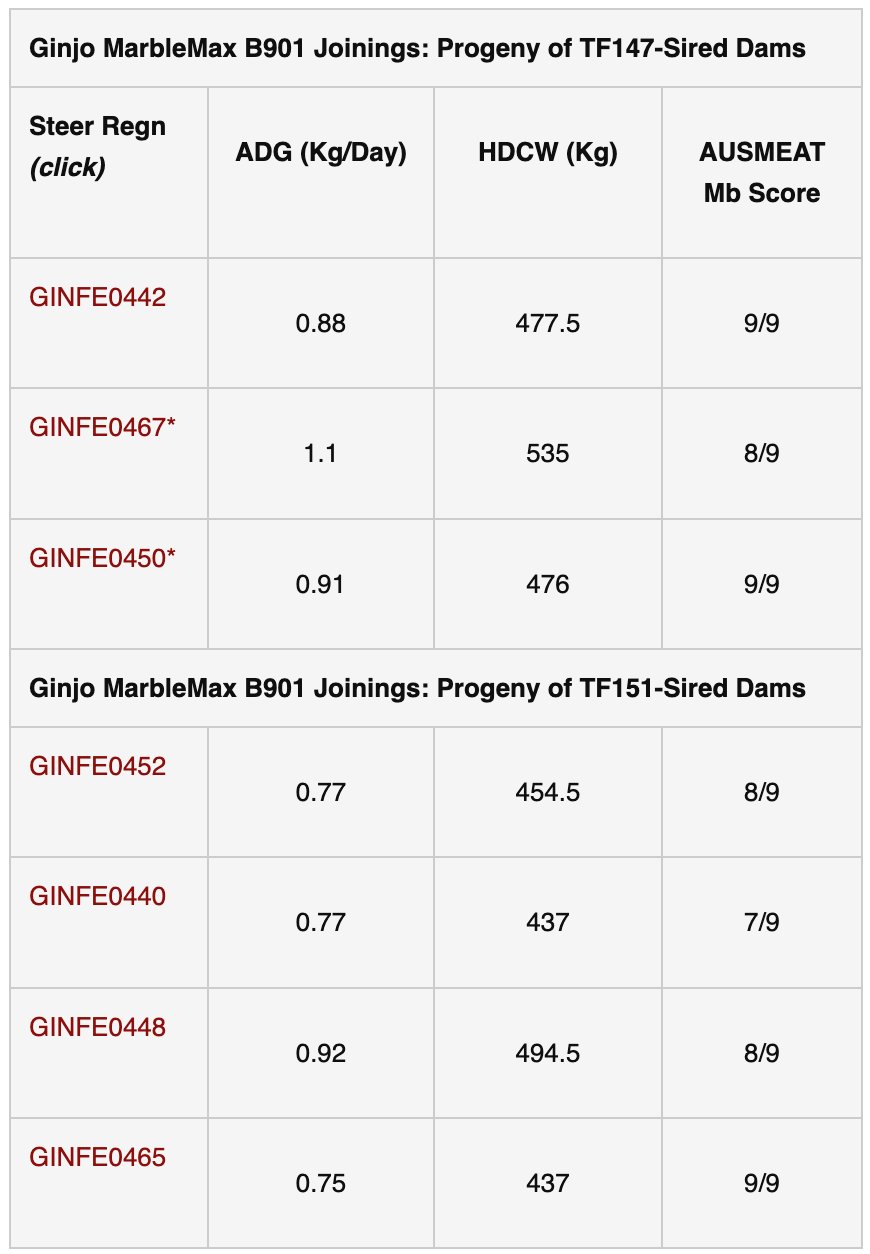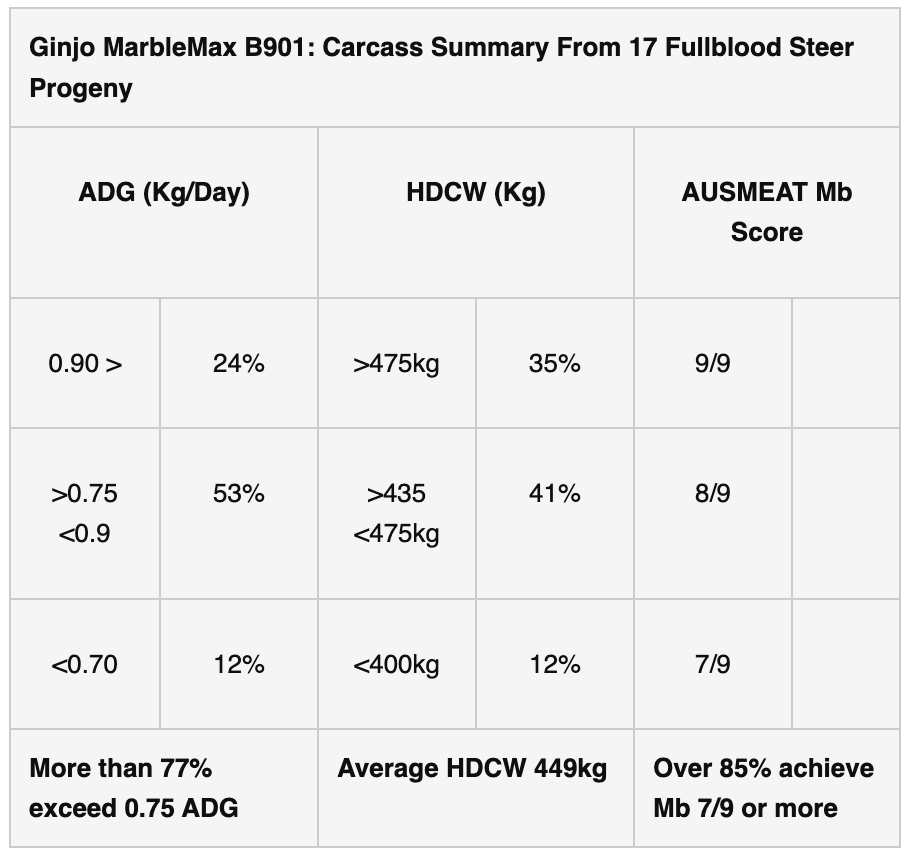Ginjo Hiranami MarbleMax™ B901
B901 is a fully registered Japanese Black sire with the Australian Wagyu Assn (GINFB0901). A five-generation pedigree is downloadable here.

Rankings Summary
Ginjo MarbleMax™ Hiranami B901 was the outstanding Australian-bred performer in the New Age (Beyond BMS 9) carcass performance revealed at the 2012 Australian Wagyu Association annual conference, Gold Coast. In this instance, marbling was the sole assessment criteria. The local sire achieved #2 overall ranking for a single superfine marbling progeny carcass as assessed by digital imaging over the previous 12 months on major Australian fullblood processing lines. This was well ahead of his own sire, Hirashigetayasu, a holder of Hongen (supreme performance) status within the Japan Registry (ZENWA), prior to export. Hirashigetayasu is also the only international Japanese Black sire to have a known Japanese progeny test.
Superior B901 progeny performance was confirmed in succeeding year, within Research EBVs tabled at the 2013 AWA Conference in Geelong, Conference (Dr Robert Banks, AGBU: ‘Genetics & Genomics for the Wagyu Breed in Australia – A springboard for growth and profit’). These draft EBVs enabled broader comparison than the single-focus 2012 marbling fineness ranking, including EBVs for carcass weight (CWT), Carcass AUS-MEAT Marble Score (CMAU), Carcass Camera Marbling % (CCMP), Carcass Camera Rib-eye Area (CCRA), and CCFI (Carcass Camera Marbling Fineness Index).
Extracted below is the comparison of Ginjo B901 with his sire, Hirashigetayasu from the 2013 Research EBVs. The three left-hand columns provide dataset record totals for progeny, carcass weight progeny and number of camera image progeny.
(Click for larger picture).
In Ginjo herd production carcass results, fed by AACo, B901 has demonstrated highly consistent marbling around AUSMEAT score 8-9, with HSCW (hot standard carcass weight) averaging over 440kg (~530kg) so far. Improved weaning weights and performance during early growout are features attractive to feeder producers. When joining smaller, high Tajima females for feeder production, superfine marbling is a proven deliverable, but with probable lower growth and HSCW. Results over larger Fujiyoshi/Itozakura joinings are outstanding, as results below illustrate. In the strong post-2012 F1 (cross-breeding) market, B901 has found favour as an economical AI sire option for greater growth and profitability, with B901 sons approved as F1 sires with several Australian feeder/processor and F1 live export systems.
Retained B901 daughters have proven attractive breeding replacements for a next generation of larger-frame females with improved maternal capabilities and proven marbling genetics.
B901 is tested FREE of AWA-notifiable genetic defects. Economical semen is available in Australia. Licensed semen is also collected for some international markets. Local stocks are available in the United States and New Zealand.
Images of Superfine Carcass Performance
The following images of the selected B901-sired carcass are from the digital camera assessment:
Additional High Integrity Performance Data
All carcass data was supplied courtesy of AACo, Aronui Feedlot, Dalby. The following additional steps were taken to ensure the highest possible data integrity in assessing B901 feedlot performance.
- Full sibling benchmark. A full flush sibling was fed/finished to provide a consistency benchmark.
- DNA verification. All feeder siblings/progeny were University of Queensland parent-verified by DNA. This eliminates the substantial risk of mix-up in commercial registration NM multi-sire programs.
- AWA Registration. Feeder progeny were/are registered on the basis of DNA parent verification with the Australian Wagyu Association, which exceeds the AWA Commercial registration requirement (see performance tables for registration details).
- Independent feeding. All feeders were sold outright into Australia’s largest fullblood commercial feeding operation, and finished without preferential treatment of any kind.
- Independent grading. All carcasses were independently graded on a commercial production line, without any breeder involvement.
We are also indebted to AACo for the nutritional programs that enable a ‘pass’ for the sire in the ultimate ‘commercial reality check’. We are not aware of ANY superior data integrity/veracity regime available for fullblood feeder assessment in Australia.
Selection Process
The B901 progeny target was high pre-weaner growth with zero-supplementation; to set up maximum weaner profitability. This potential is recognised in his Wagyu Group BreedPlan 200 day weight EBV, which is in the upper ranks for the Australian national Wagyu herd.
Taking raw data from the Ginjo ‘Stockbook’ herd database, the average B901 heifer achieves 184kg at 185 days of age; the average castrate achieves 210.5kg at 210 days of age. In both cases without dam or direct supplementation.
For the purposes of benchmarking carcass performance for the specific sire pedigree, a full flush brother (Ginjo B906) was sold onto feed with the normal feeder autumn draft sent to AACo, Aronui. This full brother turned in an outstanding result as detailed below, despite a significantly shorter feed period than would be normal under Japanese conditions.
(Click for larger picture).
Note: Comparative marbling: JMGA No 3-4 approximates USDA Prime (Abundant). No 12 is top score.
The carcass ‘consistency score’ was further enhanced with a backcross joining outcome per the carcass summary below, with the sire over his dam.
(Click for larger picture).
Bloodlines
After Hyogo (Tajima, about 44%), the secondary bloodline in B901/B906 is Tottori/Kedaka (25%), followed by Itozakura/Shimane. MarbleMax B901 then spent his debut 2008 season as a ‘clean-up’ sire in natural mating programs over fullblood females, before semen collection at the Holbrook AB centre in NSW. B901 steer progeny from these paddock joinings, over a random, genetically diverse breeder group, were sold outright into the same feedlot as the B906 sibling. In each case the secondary dam bloodline was Itozakura/Shimane, with smaller Tottori/Kedaka and Okayama infusions. Results are beneath photos.
Two B901 steers are pictured below:
These details are for the first five feeders slaughtered. To see full AWA registration pedigrees for each feeder, click through registration numbers at left.
(Click for larger picture).
One outstanding feature of the 2009-drop data is consistent strong performance in ‘Big Over Big’ joining outcomes: the large genetics of B901 over all TF147-sired females in the joining group, with a slight step down to all TF151-sired females.
(Click for larger picture).
*DOF = 630. Remainder 645 DOF.
Average DOF is 640 (Five x 630; 12 x 645). All are progeny of random natural matings as backup to AI.
A performance prediction based on this is presented below:
(Click for larger picture).
The Ginjo MarbleMax B901 full flush sibling result at top remains superior to the strong B901 progeny results immediately above, especially given significantly shorter DOF, and this highlights the consistent superiority of the specific ‘immediate relationship’ genetics. Overall, results would be acceptable in Japanese production systems, although a higher average steer carcass weight would be sought for a Top 10 Japanese sire.
Ginjo MarbleMax B901 licensed semen is currently available for a variety of international with limited stocks held in the United States and New Zealand.
For availability and details contact Mike Buchanan on
Ph: (61) 2 4997 0482 Mob: 61 437 047 234 or email mjbuch@bigpond.com.
Let’s Talk About Your Wagyu Breeding Plan
We'll Find the Right Wagyu Breeding Solution for You
Call us:

